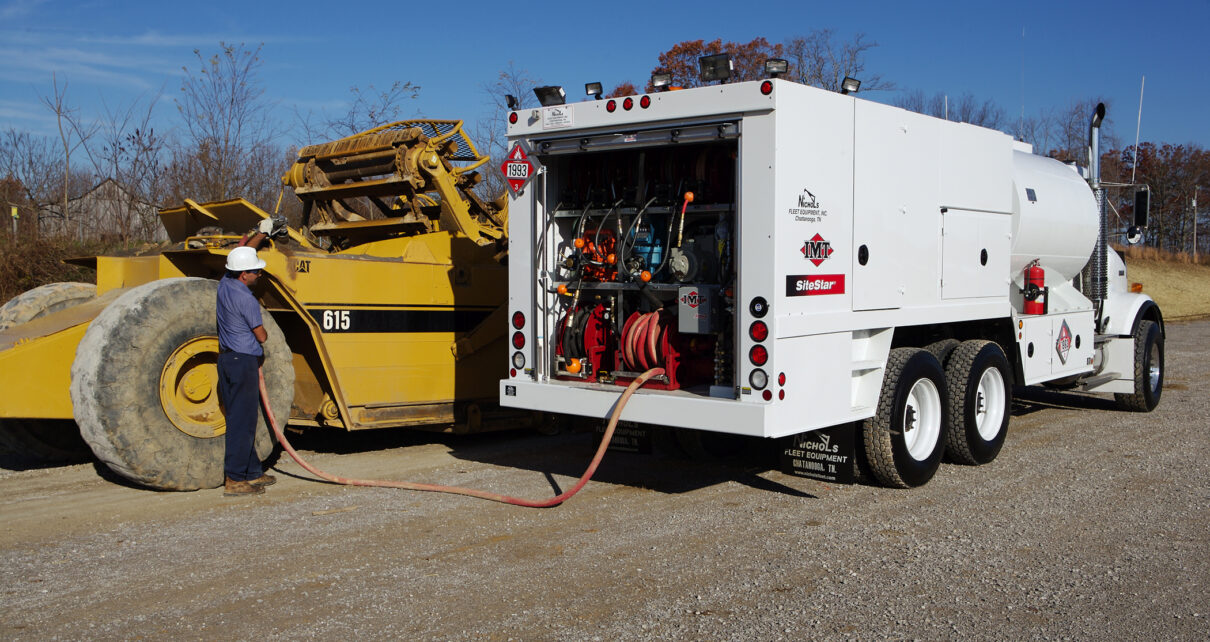Nothing surpasses a vehicle that can deliver both lubricant and gasoline. It’s the ideal combination of form and function. These vehicles are unparalleled in terms of efficiency. Your organization will be at the forefront of heavy equipment utilization if you have gasoline vehicles and a dependable crawler carrier.
Whether you rent or purchase your crawler carriers, make sure you receive them from a reliable company. Worldwide Machinery, thankfully, is here to assist. We work with a wide range of contractors, from mining to construction, who require efficient equipment to complete their activities.
What Are Fuel Trucks and What Do They Do?
Most drivers consider keeping their distance when they come upon a fuel delivery truck on the road. Despite the hazards, gasoline transportation is far safer today than it was previously. Fuel transportation has advanced dramatically and is now safer than ever, from tin cans on the bed of a wagon to the complex design of a current delivery vehicle.
Earlier Occurrences
Gasoline was first supplied by horse-drawn chariots hauling fuel barrels. This significantly impacts the petroleum sector’s delayed and dangerous expansion. Around 1880, tank carts with fuel canisters on the rear were designed, increasing carrying capacity while still being pulled by horses. In 1910, Standard Oil began using motorized tankers. Other businesses followed suit.
Oil corporations began to employ railways and underground pipes to move petroleum farther and quicker as technology evolved. Tank trucks were widely used in the early twentieth century to transport gasoline over short distances. The first tanker was built about 1905 by Anglo-Americans, a division of Standard Oil. These vehicles began to show the names of the firms whose oil they transported in the 1920s.
The tanks were initially rectangular and occasionally curved. During World War I, elliptical and cylindrical tanks were developed. All tanks, including tank trucks and tank trains that transported fuel via rail, had been changed to one of the two kinds by the conclusion of the war.
Between the Lines
Fuel production and transportation surged as a result of the conflict. Crude oil and gasoline must be transported to other nations as fast as possible, using whatever means available. This included oil tankers on lakes and the sea, pipelines, tanker cars and trucks, and air and sea refueling. Fuel distribution lines were critical components of the system that kept troops mobilized, engaged, and nourished. The bulk of the Red Ball Express’s French drivers were Black Americans. This group offered a variety of petroleum commodities that travel quickly, such as grease, motor oil, and gasoline.
Trucks were frequently employed for this. They were either lugging gasoline or refueling for the next adventure. Constant usage, on the other hand, may result in faster degradation and untimely collapse of the vehicle. There were always extra tires to retread all of the trucks if the supply ran out. It wasn’t very helpful when the vehicle’s tires blew out. While the war raged on the other side of the world, home heating oil and 80-octane gasoline were critical in keeping people powered at home.
The Petroleum Administration for War first defined short-haul activities as fewer than 25 miles but later increased the limit to 200 miles in order to secure the United States’ gasoline supply. Tank trucks transported gasoline to nearby gas stations and aviation fuel to airports over short distances.
Modern Delivery and Transportation Evolution
Tanker trucks now have strong linings that protect the tank, regulate leaks, and prevent contamination. Aluminum tanks are utilized because they are lighter, can support more weight, and will not catch fire if a vehicle rolls over.
Modern segmented tanks may only convey a single type of liquid cargo, such as gasoline or industrial chemicals, at a time. Bobtail trucks with fewer than 5,000 gallons capacity are typically utilized to transfer fuel over small distances instead of long-haul vehicles.
Gasoline is a refined commodity that is transported from refineries to individual gas stations via modern gasoline distribution equipment. One of the most major developments in gasoline distribution, however, has been an increase in safety precautions and training. Hazardous goods drivers must get additional training to safeguard both the driver and the cargo. Tanks are also constructed with the environment in mind, particularly when it comes to the gasoline they transport.
What Are the Advantages of Lube and Fuel Trucks?
While maintaining a fleet of vehicles is a straightforward task, there is more to running a heavy equipment business than meets the eye. Fuel and lubricant trucks must first be provided with the right tanks, pumps, and hoses in order to safely and correctly discharge liquids to various types of machinery and vehicles. They must also be outfitted with cutting-edge technology to guarantee that fluids are provided appropriately and leak-free.
Fuel and lubricant trucks must also be capable of navigating crowded streets and roadways. Driving necessitates the use of a competent and experienced driver who is capable of dealing with traffic and road conditions.
Finally, fuel and lubricant trucks are critical to the running of a vehicle fleet. If they were not there, activities would come to a standstill. Keep an eye out for one of these trucks if you ever need to refuel or top up! Your company’s capacity to rent space may be vital to its success.
Additional Equipment You May Require
You may need to purchase additional equipment if your company employs lubricant trucks. It would be best if you thought about adding a crawler carrier to your truck fleet. Crawler transporters are a very adaptable piece of technology. These vehicles are built to withstand the worst terrain and weather conditions. Crawler carriers are a type of construction equipment used to transport large volumes of material from one location to another. They are often used when a standard-wheeled vehicle is hazardous or impractical, such as negotiating uneven terrain.
As a consequence, a crawler carrier is a way to go if you want a machine that can do it all. However, remember to prepare your gasoline automobile. They will make sure that your fleet operates properly and on schedule.
When it comes to selecting the right crawler carrier, put your trust in Worldwide Machinery. With sites in Texas, Utah, and Kentucky, we carry some of the most well-known brands. Click here to learn more about our crawler carrier and heavy equipment rentals.





